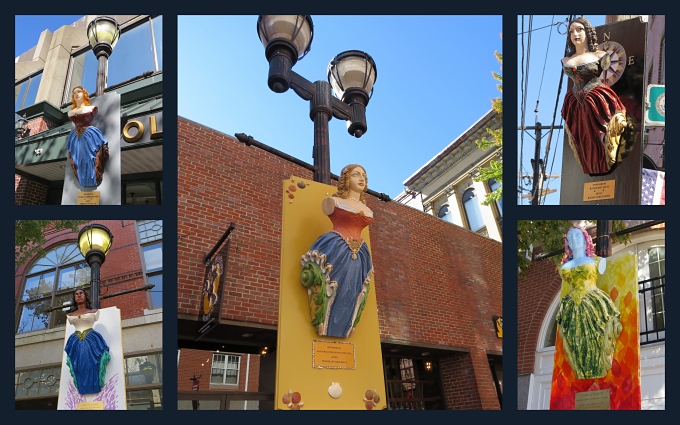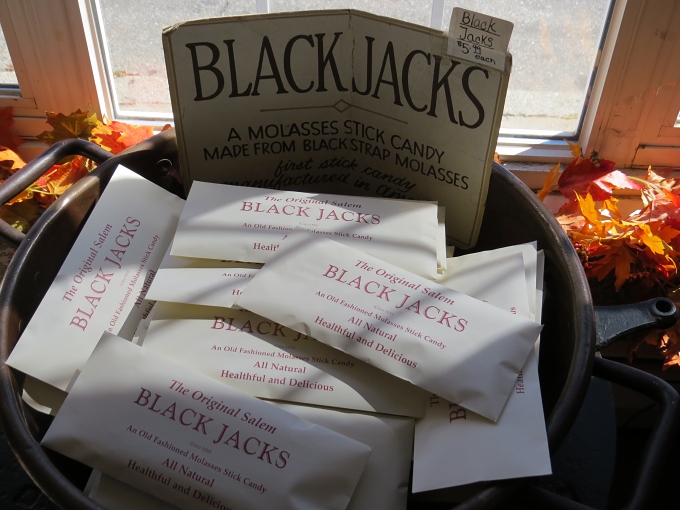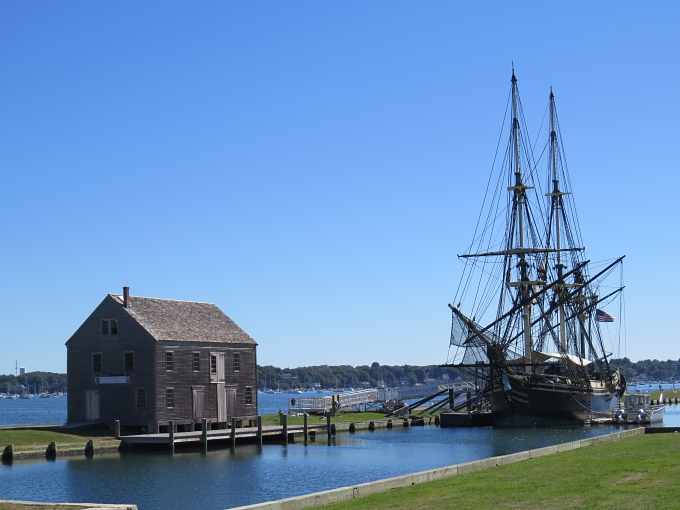Witch City Walking Tour - Salem Massachusetts Pt. 1
/History OR Hysteria?
Founded in 1626, there are several historical aspects to explore in the town of Salem, Massachusetts. Paramount are the infamous witch trials of 1692 and then, of course, the short-lived, but lucrative trading and maritime history which was at its peak between the Revolutionary War and the War of 1812. We were hoping to do a little exploration of both.
We arrived early at the Salem NPS Visitor's Center and asked for a “non-commercial” walking map. Every map and brochure we found had witch museums, wax museums and/or haunted house tours on it, but little of historical interest that appealed to us. We wanted to see some of the real Salem beyond the hype. Bob Grant, the volunteer ranger answered “Do you want hysteria or history?” I smiled and answered “Mostly history, but a little hysteria would be okay”. He was referring, of course, to the 17th century witch trial hysteria that attracts so much tourism versus Salem's maritime history. We really were interested in both … with the history and without the hype. He supplied us with a useable map, lots of local knowledge, some brochures on specific sites to see and sent us on our way.
Once again, we were blessed with a glorious late summer's day. The temp hovered around 70F (21C), the sky was cerulean blue and the leaves were just beginning to turn to their fall-ish colors. It was a mid-week day and there were few tourists around, perfect for our kind of exploring. We walked past the impressive Peabody-Essex Museum. We've visited this world-class museum several times in the past. We seemed to inhale a sense of the building and its contents just by walking by.
The Essex Street pedestrian mall is chock-a-block full of witch-y restaurants and boutiques. From t-shirts, to wine, to witchy costumes, it's all here in the Witch City and available for sale, but we were aiming for witch-less history to start.
Blending its witch history with its maritime history, the town fathers sponsored a contest for local artists to create ship's figureheads and the resulting works of art were displayed on lampposts throughout the city.
We decided to begin our exploration in earnest with the McIntire Architectural Walking Tour. Samuel McIntire was “one of the earliest and most influential architects (and wood carvers) in the United States.” According to Bob's directions, a stroll down Chestnut Street was a must in order to view its grand, McIntire-inspired, Federal-style mansions. Uneven brick sidewalks, stately, tall shade trees and old gas lamps lined the streets graced by period mansion after mansion. Some of the buildings were available for tours including The Hamilton House, a Federal-era public building, designed by McIntire and constructed in 1805 as an assembly hall.
The port of Salem was a hopping place by the time the colonies reached a revolutionary crisis with Britain in 1775. Fortune-seeking sea captains like Richard Derby accumulated great wealth, based on the cod fish export and molasses import trades. Trading easily caught and salt-preserved cod brought valuable cargoes of fresh citrus, grapes, wine, iron and salt back to Salem. Molasses from the West Indies was a key commodity for the very profitable rum industry. The houses in this historic district definitely reflected the wealth of its early (and current) residents. Derby, by the way, is considered America's first millionaire.
Beyond McIntire and Derby, lots of famous people have either been born or lived in Salem including Nathaniel Hawthorne. The House of Seven Gables, made famous by Hawthorne's novel of the same name, was right up Derby Street, not far away. We'd visited here in the past, too, and rather than opting for a tour, we decided just to visit the gift shop which afforded us a chance to get a good photo of the house itself.
Across the street, Ye Olde Pepper Companie, touted as the oldest candy store in the USA, beckoned us in for at least a look-see. Along with all the Hallowe'en candies and chocolates on display, there were barrels of peppermint and lemon Gibralters and a black molasses stick candy known as Black Jacks, candies known to satisfy the “sweet tooth” of colonial folk two centuries ago.
Everything seems to be within walking distance in Salem, including the historic port and wharves. We'd moored at the Pickering Wharf back in 2000, but things had changed since then. The Salem Maritime Historic Park, founded in 1938, was the first NPS historic site. Salem, by the way, is also the birthplace of Nathaniel Bowditch, considered the father of modern navigation. Though first published in 1892, we still have his book The American Practical Navigator
When we visited last, the tall ship Friendship was being rigged at the Charlestown Navy Yard, so we missed seeing her. A reconstruction of a 171-foot three-masted Salem East India trader built in 1797, the Friendship is the largest wooden, Coast Guard certified, sailing vessel to be built in New England in more than a century and she's pretty impressive.
We could have delved deeper into Salem's maritime history, but this would have to suffice for one day. We moved on to the witch-y side of Salem next … and there was definitely much to see.
Stay tuned for Hysteria AND History Part II.











